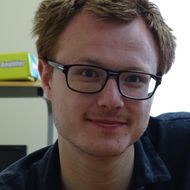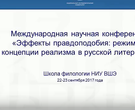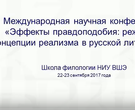- A
- A
- A
- АБB
- АБB
- АБB
- А
- А
- А
- А
- А
- Национальный исследовательский университет «Высшая школа экономики»
- Факультет гуманитарных наук
- Школа филологических наук
- Лекции Гревила Корбета лингвистам НИУ ВШЭ
-
Школа
- О школе
- Сотрудники
- Образовательная деятельность
- Научные семинары школы
- Аспирантская школа по филологическим наукам
- Майнор "Инструменты эффективной коммуникации"
-
Проекты школы
-
- Летопись жизни и творчества Б.Л. Пастернака
- Большой проект «Русская литература в социальном измерении: компьютерная платформа СОЦИОЛИТ»
- Всеволод Некрасов. Литературный архив
- Большой проект «Речевые практики»
- Трансформация коммуникативной модели в эго-текстах русского модернизма
- Сравнительное изучение метрического стихосложения на фоне языковой просодии: цифровая аналитическая платформа “Прозиметрон”
-
- Майнор "История литературы"
-
Подразделения
- Лаборатории
- Научно-учебные группы
- Мандельштамовский центр
Адрес: 105066, г. Москва,
Старая Басманная ул., д. 21/4
Т. 1: Разделы I–XI. М.: Русский фонд содействия образованию и науке (Университет Дмитрия Пожарского), 2025.
Долгорукова Н. М., Любавина А. А.
Литературоведческий журнал. 2025. № 2(68). С. 147-159.
В кн.: Индоевропейское языкознание и классическая филология - XXIX (1). СПб.: Институт лингвистических исследований РАН, 2025. С. 425-430.
Адрес: 105066, г. Москва,
Старая Басманная ул., д. 21/4
Лекции Гревила Корбета лингвистам НИУ ВШЭ
В мае 2013 г. на факультете филологии НИУ ВШЭ замечательный британский лингвист Гревил Корбет прочел цикл лекций на тему
"Grammatical features and morphological complexity: a canonical approach".
Greville G. Corbett
(Surrey Morphology Group)
What is a possible human language? Typology tackles this question by determining the types, and the possibilities of co-occurrence between them. Typologists have taken on successively more difficult issues, and these bring a need for new methods. In a recent proposal, the canonical approach, we take definitions to their logical end point, enabling us to build theoretical spaces of possibilities. Unlike in classical typology, we only then ask how this space is populated with real instances. This approach has been adopted for problems in morphology, in syntax, and to a more limited extent in phonology and in semantics. The three lectures will focus on morphology and syntax, particularly on the interesting problems that we find at the interface between them, looking at the morphosyntactic features.
1. A typological perspective on features
2. The penumbra of morphosyntactic features
3. Lexical splits and complex morphology
We shall examine challenging data from a range of languages, from Dagestan to New Guinea (as well as some more familiar ones), setting up clean and neat typologies, and then seeing how real languages fit and do not fit into our typologies. Relevant papers are available at:
http://www.surrey.ac.uk/englishandlanguages/research/smg/canonicaltypology/bibliography/. In addition, two relevant volumes have appeared recently:
Dunstan Brown, Marina Chumakina & Greville G. Corbett (editors) Canonical Morphology and Syntax. Oxford: Oxford University Press.
Greville G. Corbett. Features. Cambridge: Cambridge University Press.
- ВКонтакте
- Telegram
- О ВЫШКЕ
- Цифры и факты
- Руководство и структура
- Устойчивое развитие в НИУ ВШЭ
- Преподаватели и сотрудники
- Корпуса и общежития
- Закупки
- Обращения граждан в НИУ ВШЭ
- Фонд целевого капитала
- Противодействие коррупции
- Сведения о доходах, расходах, об имуществе и обязательствах имущественного характера
- Сведения об образовательной организации
- Людям с ограниченными возможностями здоровья
- Единая платежная страница
- Работа в Вышке
- ОБРАЗОВАНИЕ
- Лицей
- Довузовская подготовка
- Олимпиады
- Прием в бакалавриат
- Вышка+
- Прием в магистратуру
- Аспирантура
- Дополнительное образование
- Центр развития карьеры
- Бизнес-инкубатор ВШЭ
- Образовательные партнерства
- Обратная связь и взаимодействие с получателями услуг
-
http://www.minobrnauki.gov.ru/
Министерство науки и высшего образования РФ
-
https://edu.gov.ru/
Министерство просвещения РФ
-
http://www.edu.ru
Федеральный портал «Российское образование»
-
https://elearning.hse.ru/mooc
Массовые открытые онлайн-курсы
- © НИУ ВШЭ 1993–2025 Адреса и контакты Условия использования материалов Политика конфиденциальности Карта сайта
- Редактору






.jpg)